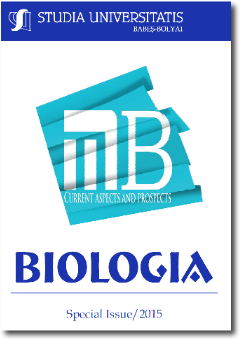Western Blot analysis of detoxifying enzymes, cytochrome c and sirtuin expression in patients suffering from mitochondrial complex I deficiency
Keywords:
Mitochondria, oxidative stress, sirtuins.Abstract
In recent years, a great deal of interest has been given to sirtuins and their role in mitochondrial metabolism, especially their implication in the process of aging. By activating detoxifying enzymes such as manganese-dependent superoxide dismutase (MnSOD) or copper-zinc superoxide dismutase (CuZnSOD), sirtuins are able to trigger enzymatic cascades leading to the reduction of cellular reactive oxygen species (ROS). This is of high importance as ROS is one of the main factors implicated in cellular aging.
In addition, it has been recently shown that mitochondrial complex I activity influences the expression and function of sirtuins. Complex I or the NADH dehydrogenase is the largest complex of the mitochondrial respiratory chain and a major regulator of energy production. Also, it is the main site for ROS production. That being said, it is important to determine not only the exact connection between sirtuins and ROS production, but also the way complex I affects sirtuin expression and activation.
In our study we analyzed selected cell lines carrying mitochondrial DNA mutations in genes encoding for complex I subunits. Our main goal was to identify potential correlations between sirtuin expression, ROS production and specific mitochondrial DNA mutations. This has been done by measuring antioxidant enzymes and sirtuin expression using Western Blot technique. The results demonstrate that complex I deficiencies do have an impact on ROS production and sirtuin expression. Moreover, we identified a particular correlation between SIRT3 and MnSOD.
References
Alberts, B., Johnson, A., Lewis, J., Morgan, D., Raff, M., Roberts, K., Walter, P. (2014) Molecular Biology of the Cell, 6th Edition, Garland Science, New York, pp 1464
Ahn, B. H., Kim, H. S., Song, S., Lee, I. H., Liu, J., Vassilopoulos, A., Deng, C. X., Finkel, T. (2008) A role for the mitochondrial deacetylase Sirt3 in regulating energy homeostasis, Proc. Natl. Acad. Sci. USA, 105, 14447-14452
Atlante, A., Calissano, P., Bobba, A., Azzariti, A., Marra, E., Passarella, S. (2000) Cytochrome c is released from mitochondria in a reactive oxygen species (ROS)-dependent fashion and can operate as a ROS Scavenger and as a respiratory substrate in cerebellar neurons undergoing excitotoxic death, J. Biol. Chem., 275, 37159-37166
Bause, A. S., Haigis, M. C. (2012) SIRT3 regulation of mitochondrial oxidative stress, Exp. Gerontol., 48, 634-639
Fassone, E., Rahman, S. (2012) Complex I deficiency: clinical features, biochemistry and molecular genetics, J. Med. Genet., 49, 578-590
Haigis, M., Sinclair, D. (2010) Mammalian Sirtuins: Biological Insights and Disease Relevance, Annu. Rev. Pathol., 5, 253-295
Kong, X., Wang, R., Xue, Y., Liu, X., Zhang, H., Chen, Y., Fang, F., Chang, Y. (2010) Sirtuin 3, a new target of PGC-1alpha, plays an important role in the suppression of ROS and mitochondrial biogenesis, PloS ONE, 5, e11707
Li, Y., Liu, T., Liao, S., Li, Y., Lan, Y., Wang, A., Wang, Y., He, B. (2015) A mini-review on Sirtuin activity assays, Biochem. Biophys. Res. Commun., 467, 459-466
McDonnell, E., Peterson, B. S., Bomze, H. M., Hirschey, M. D. (2015) SIRT3 regulates progression and development of disseases of aging, Trends Endocrinol. Metab., 26, 486-492
Parihar, P., Solanki, I., Mansuri, M. L., Parihar, M. S. (2014) Mitochondrial sirtuins: emerging roles in metabolic regulations, energy homeostasis and diseases, Exp. Gerontol., 61, 130-141
Verdin, E., Hirschey, M. D., Finley, L. W., Haigis, M. C. (2010) Sirtuin regulation of mitochondria: energy production, apoptosis and signaling, Trends. Biochem. Sci., 35, 669–675
Downloads
Published
How to Cite
Issue
Section
License
Copyright (c) 2015 Studia Universitatis Babeș-Bolyai Biologia

This work is licensed under a Creative Commons Attribution-NonCommercial-NoDerivatives 4.0 International License.





